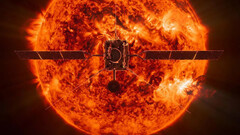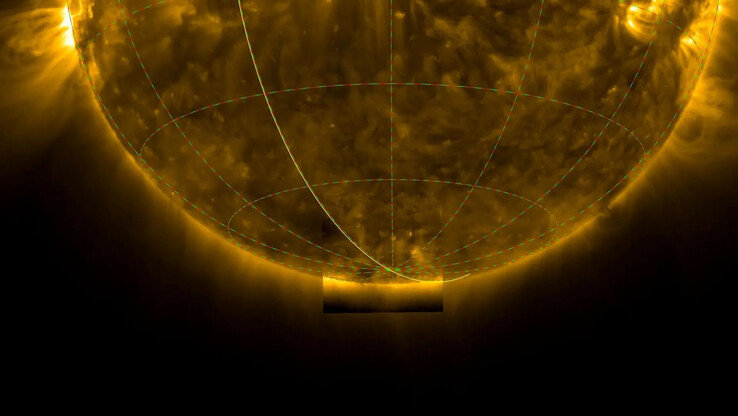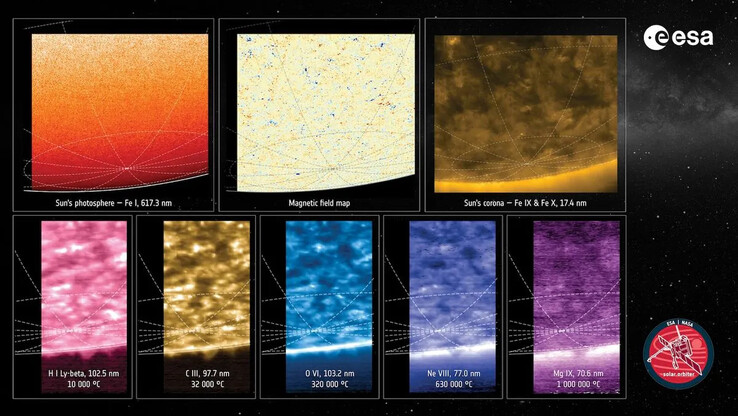Although the Sun has been shining (and sending heaps of energy the Earth's way) for billions of years, contributing to the development of life, it still holds many mysteries. Recently, images of the star's South Pole were unveiled, revealing a world that was previously unknown to all.
These images were revealed to the world thanks to the European Space Agency's Solar Orbiter probe. More specifically, it was by achieving the feat of tilting 17 degrees below the solar equator that researchers were able to obtain such a rendering.
Taken on March 23, they reveal details that were previously invisible to the naked eye, such as the solar winds and magnetic field of this star. In addition, the instruments installed on this probe recorded a wealth of data in various wavelengths, both visible and invisible (ultraviolet).
One of these instruments, the Polarimetric and Helioseismic Imager (PHI), provided detailed magnetic maps showing a highly abnormal distribution of magnetic polarities located at the South Pole. If this doesn't mean much to you, it is a sign of an upcoming reversal of the Sun's magnetic field.
However, this is nothing unusual, and there is no need to fear various catastrophes. In fact, this cycle occurs on average every 11 years and marks the transition between solar maximum and minimum.
This activity is measured with the help of sunspots and eruptions, which are more or less frequent depending on the period. At the beginning of each cycle, we refer to a solar minimum, which means that activity is relatively low. Then it moves to the maximum, where the reversal occurs, before returning to the minimum. The 11-year duration is entirely due to the dynamic processes of the Sun.
For Solar Orbiter, although these images are unique and provide a better understanding of our star, its mission is far from over. In fact, it will need to have different and more pronounced angles of inclination to further its observations and understanding of these elements.
Source(s)
ESA, Techno-Science (in French)














